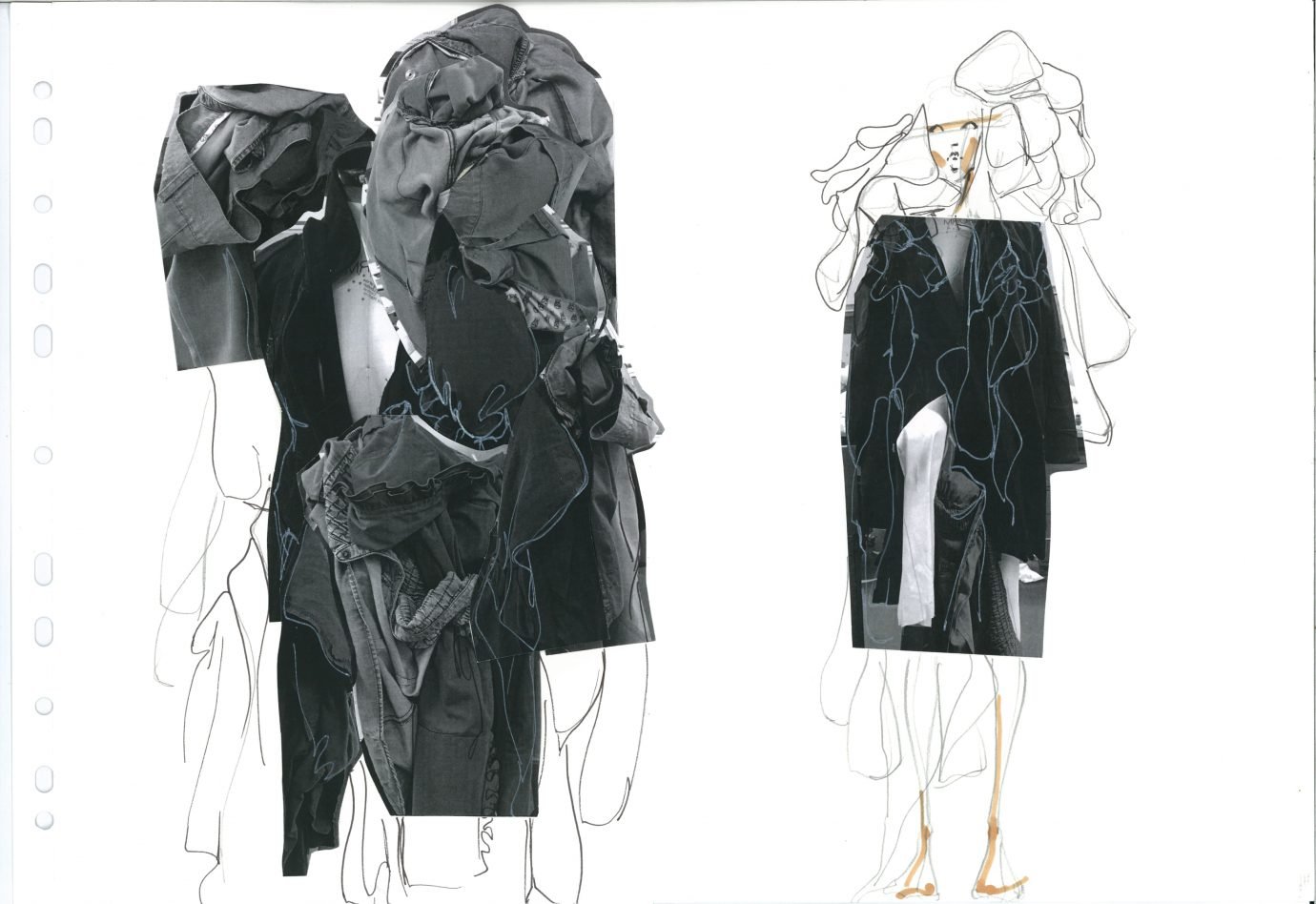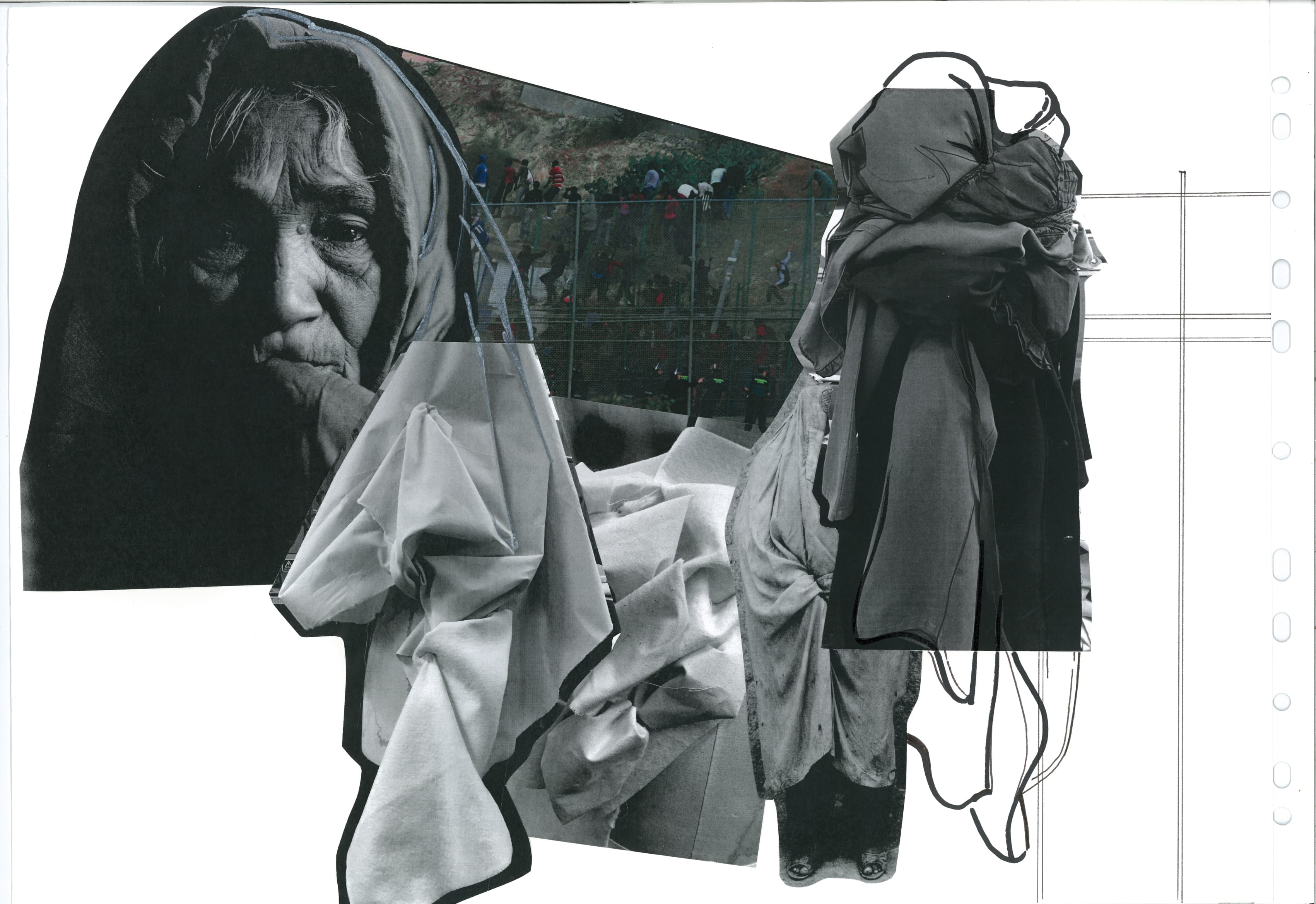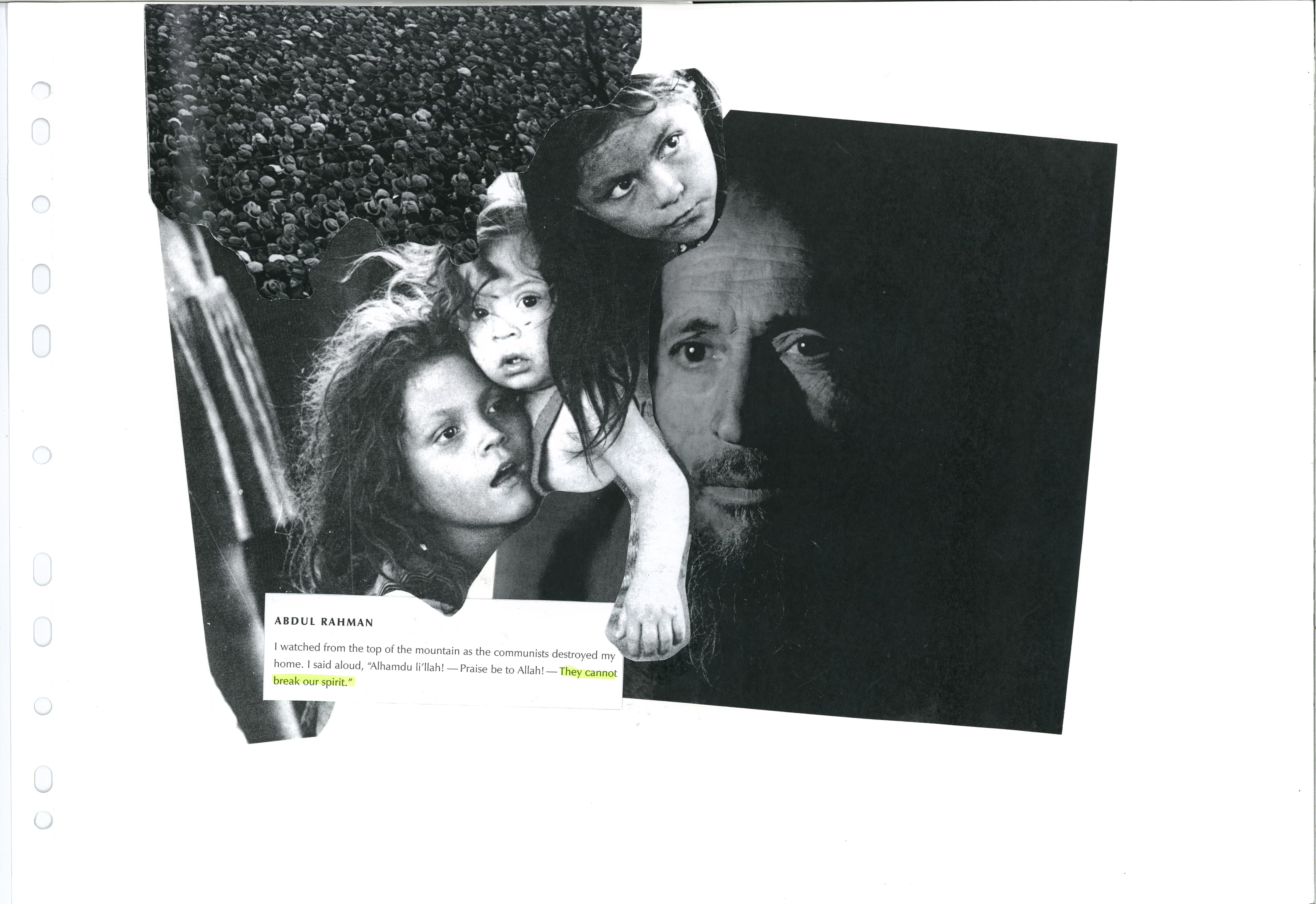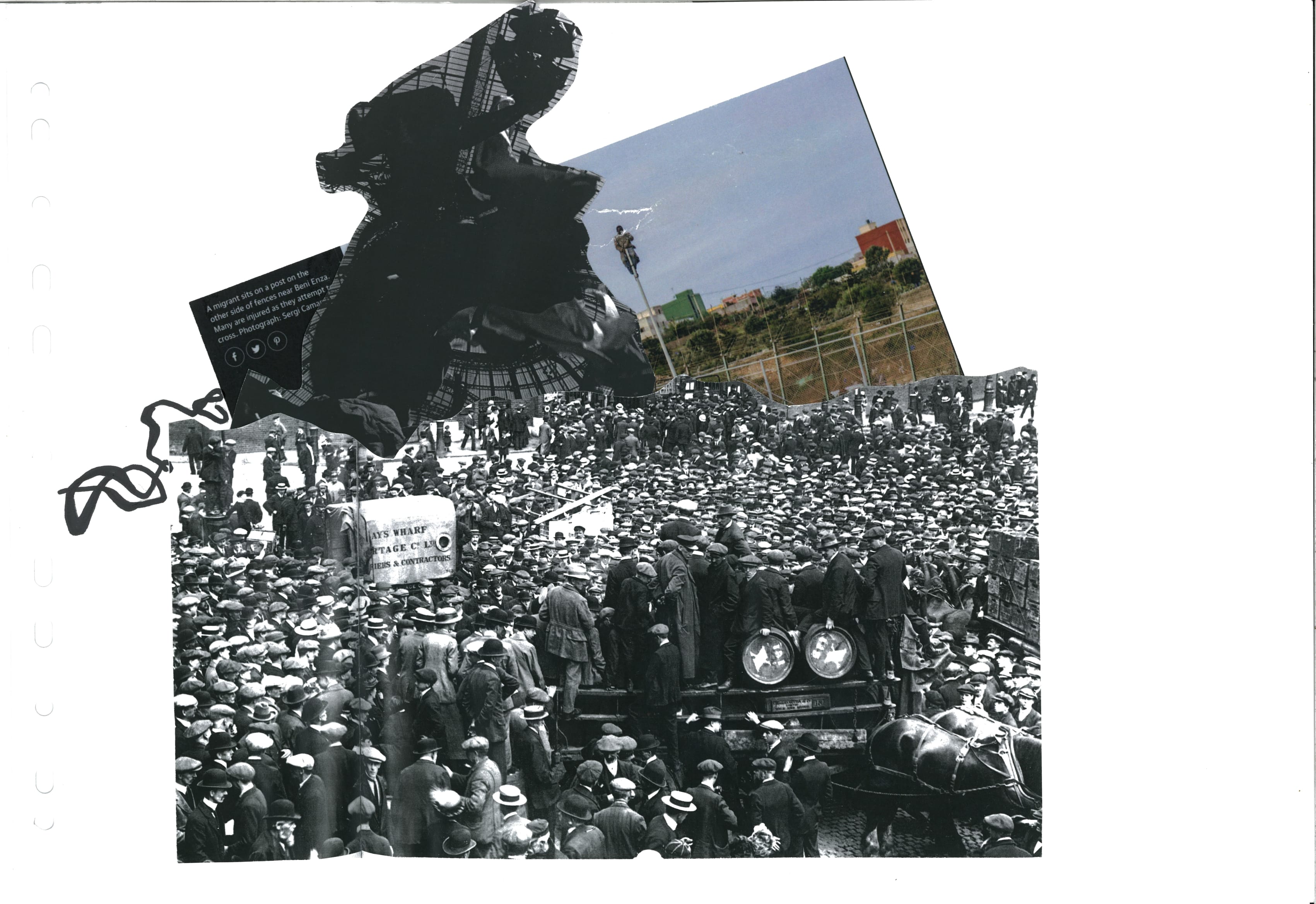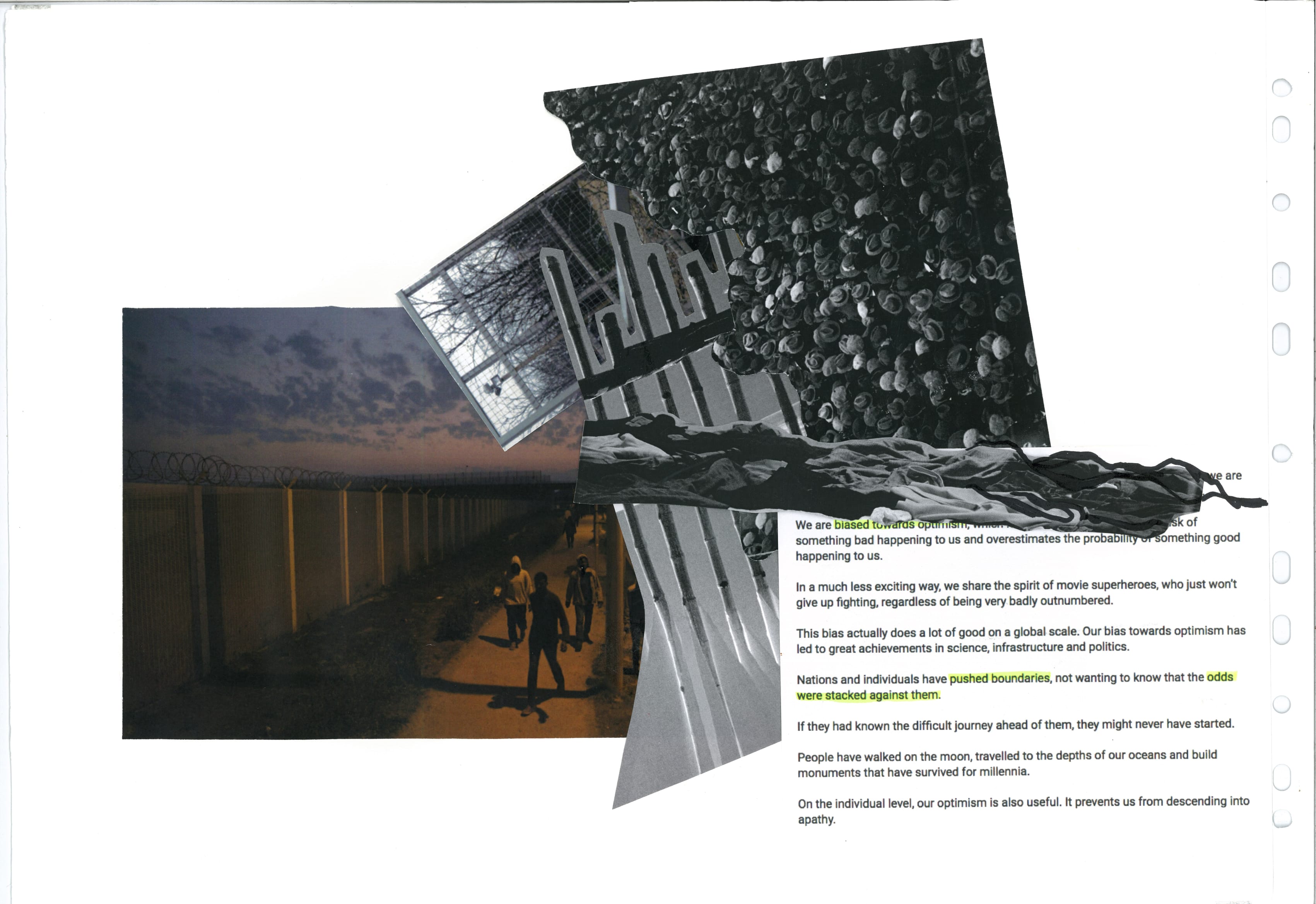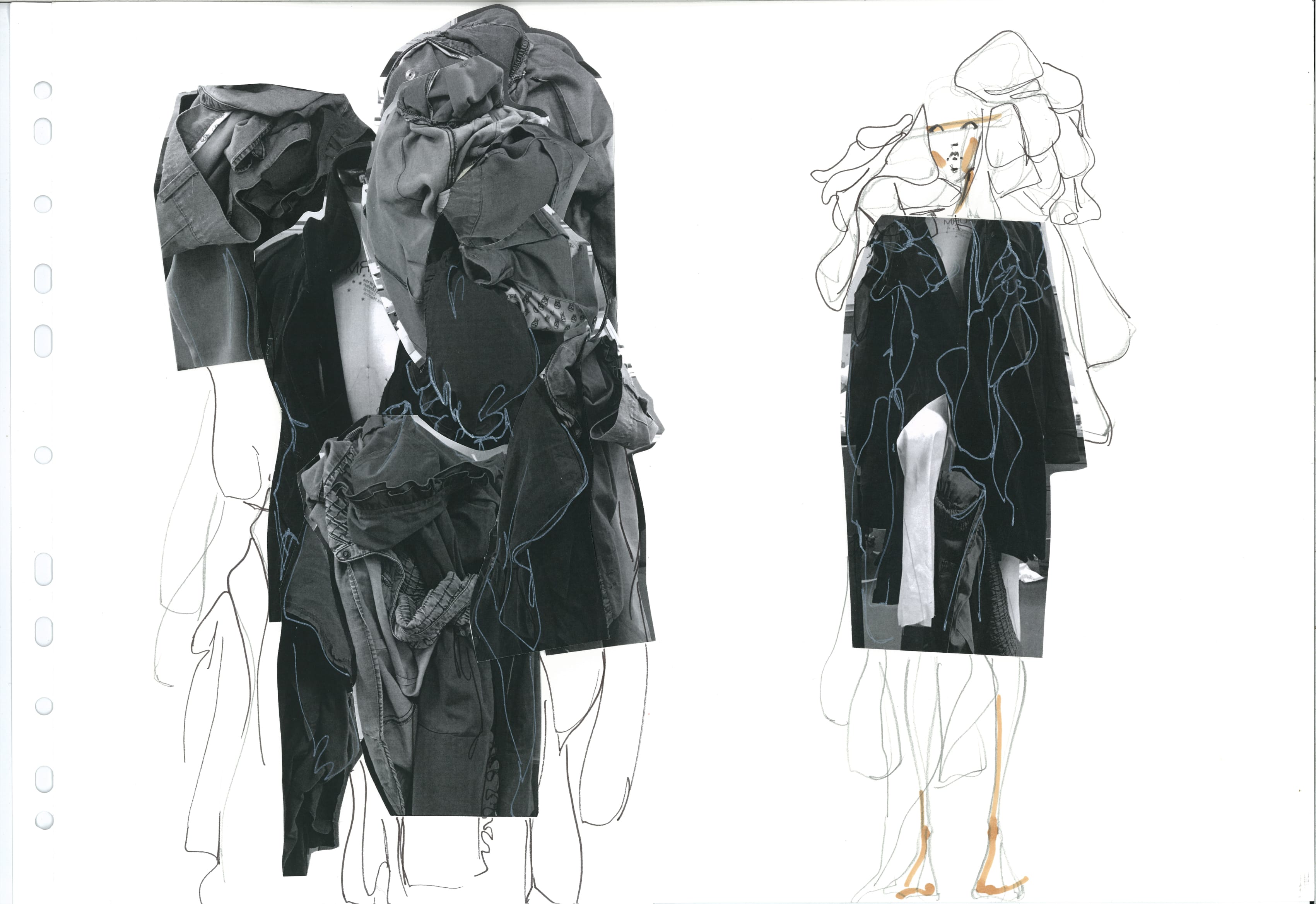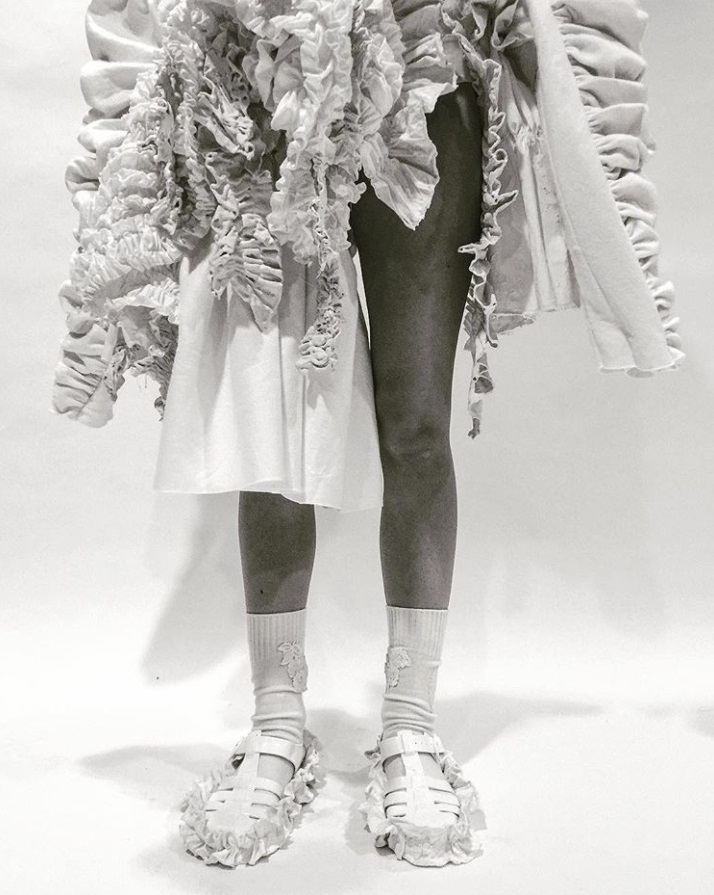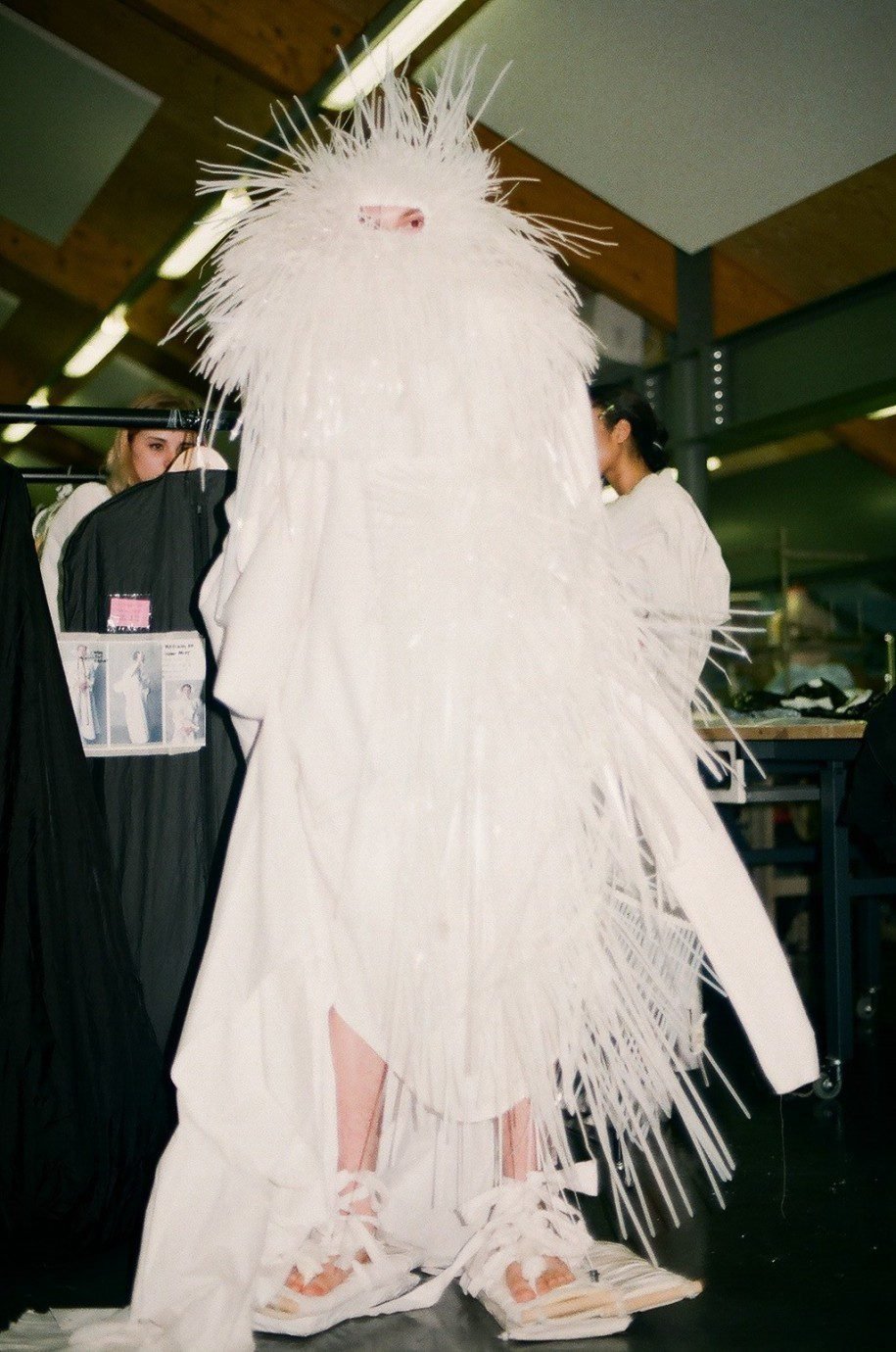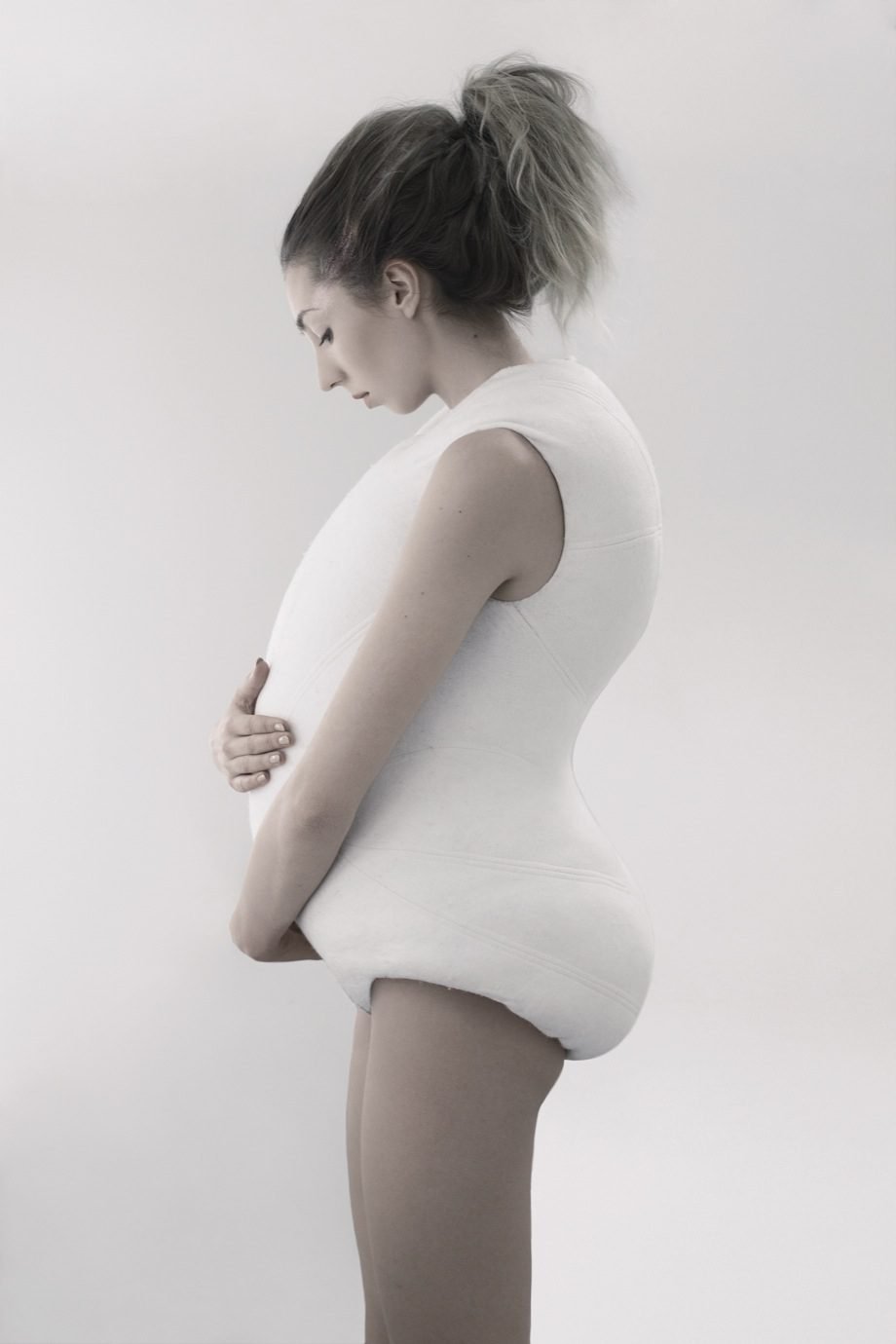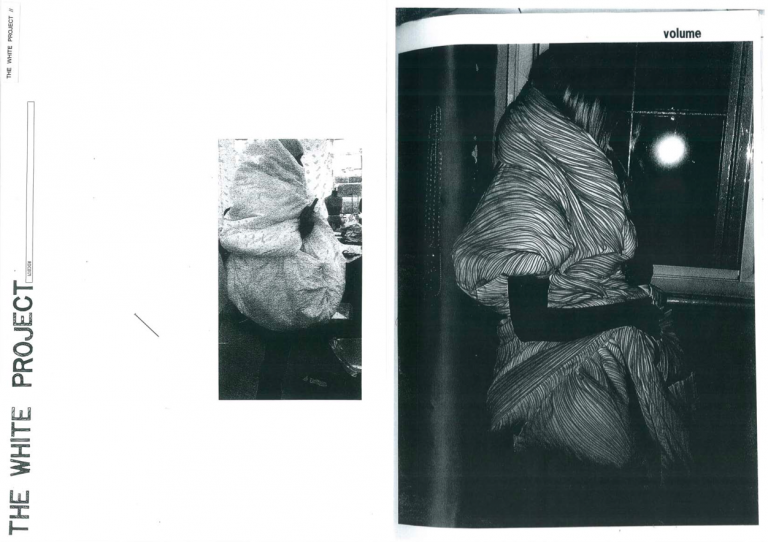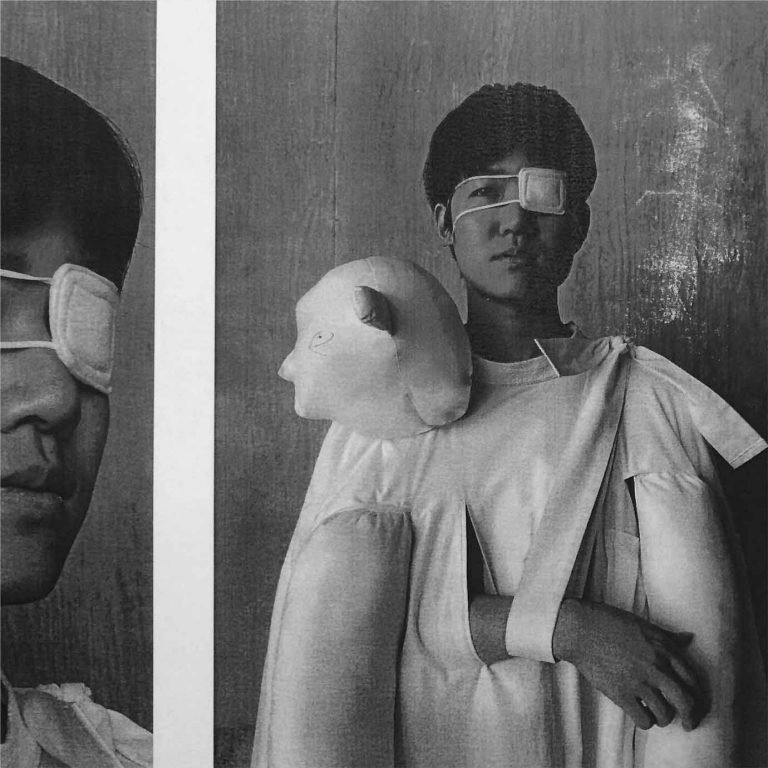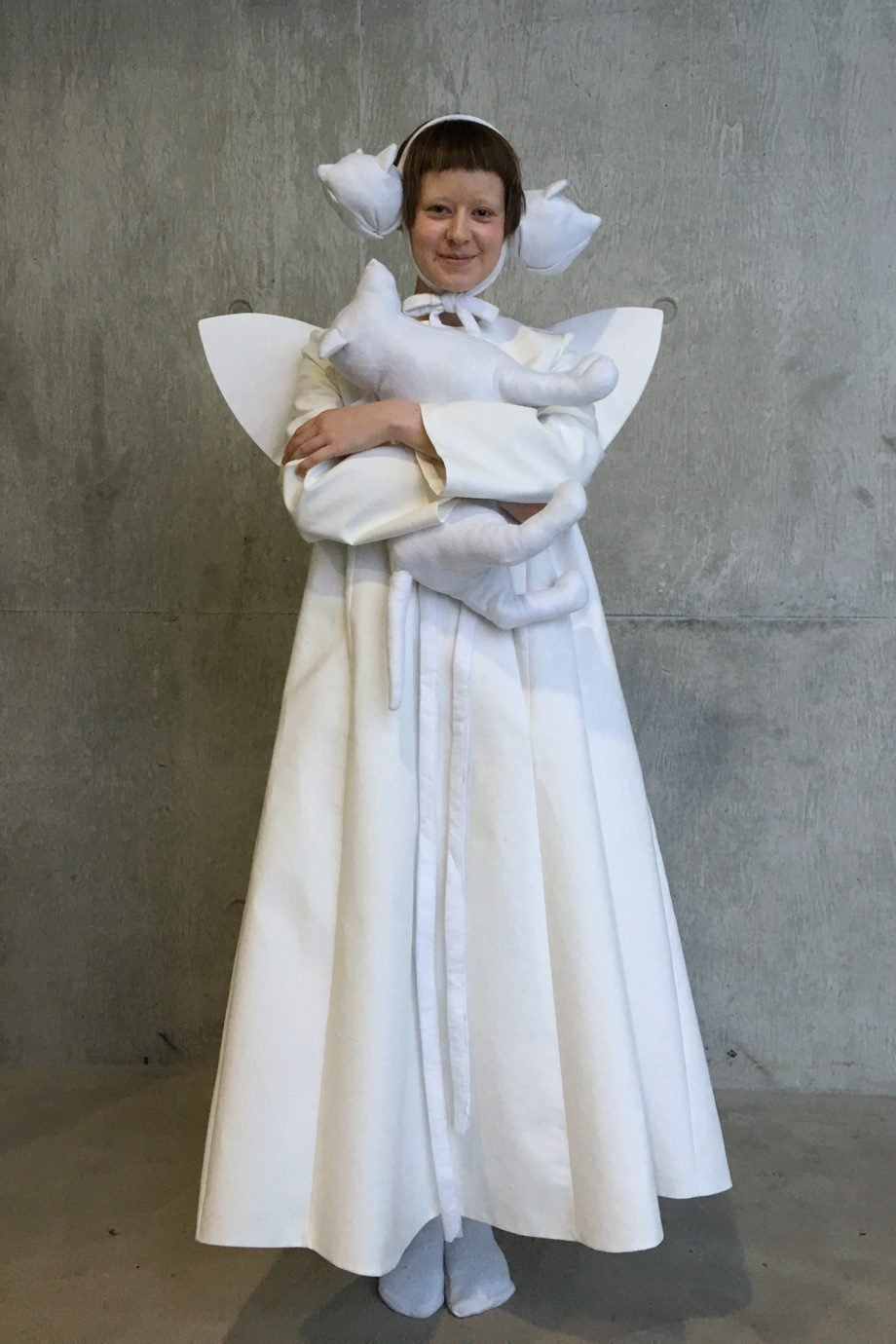Heather’s inspiration predominantly came as a response to recent political changes, such as Brexit and the US election; putting the main emphasis on the refugee crisis in Europe. The mentality of the “us” vs “them” argument triggered Heather to reflect on humanity: “Images convey just masses upon masses of people – it’s difficult to see these refugees as people with souls, feelings and dreams,” she explained.
Heather feels that one way for large groups to maintain their humanness is for individuals who share similar social struggles to come together. Perhaps this is a reason for the voluminous shape of the garments, which are reminiscent of life jackets, with the model sinking and blending into the fabric. Heather explains the idea further: “The coat is made up of individual garments, each with their own details and spirit, representative of individual people each with their own qualities. Then, by layering them on top of each other, we are able to see the beauty of combining the individual to form a group that is still unique and with its own life.”

